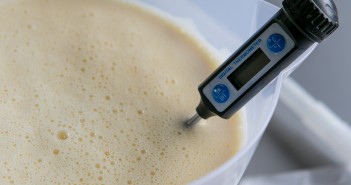Producers of cattle, sheep and pigs are being urged to embrace the ‘liquid gold’ properties of colostrum in reducing the need for antibiotics in farm animals and improving their lifetime performance.
 The #ColostrumIsGold campaign, created by the Responsible Use of Medicines in Agriculture (RUMA) alliance, will underline that responsible use of antibiotics starts with newborn calves, lambs and piglets receiving the right amount of colostrum within a couple of hours of birth – something all farmers have the potential to achieve.
The #ColostrumIsGold campaign, created by the Responsible Use of Medicines in Agriculture (RUMA) alliance, will underline that responsible use of antibiotics starts with newborn calves, lambs and piglets receiving the right amount of colostrum within a couple of hours of birth – something all farmers have the potential to achieve.
Various organisations will be releasing information and promoting best practice throughout February, mainly based around getting the 3Qs – ‘quality, quantity and quickness’ – of colostrum delivery right.
Mandy Nevel, veterinary lead at AHDB and pig specialist, said piglets need colostrum to maintain body temperature and protect them against disease.
“Baby pigs are born wet and with very little energy reserve. Ideally they need to get a feed in within the first 30 minutes to prevent hypothermia. This early feed will also provide essential immunity, giving them the best chance of survival in their first few weeks of life.
“Sow vaccination is the best way to boost antibody levels in the colostrum. That is why piglets who receive good levels of colostrum early will also be the healthiest at weaning. That extra care in the first hours of life will really make a difference.”
Dr Nevel highlighted post-weaning diarrhoea and respiratory disease as longer term threats for piglets receiving insufficient colostrum at birth. “Colostrum really is a golden opportunity to secure lower antibiotic use and a healthier animal for its whole life.”
Wake-up call
RUMA chairman Gwyn Jones says that as a farmer, he recognises the pressures at lambing and calving, and just how easy it can be to take shortcuts with the all-important first feed.
“But it was a wake-up call when I found out calves receiving insufficient colostrum at birth are more than twice as likely to develop respiratory disease, and can have mortality rates as high as 13%,” he said.
“Too often we see the animal start to suck or we give it a feed, and don’t think about the actual quantity of colostrum it consumes immediately after birth.
“All these factors have an enormous impact on the levels of antibodies in the bloodstream 24 hours later, and on the subsequent health of the animal and its need for antibiotic treatment during its whole life.
“Better colostrum management is an incredible opportunity – not to ensure better health for the future, but cut antibiotic use and produce a more valuable animal for onward rearing.”
AHDB research manager Dr Jenny Gibbons said the recent ‘Calf to Calving’ campaign focusing on youngstock rearing has seen nearly 40% of attendees go on to buy equipment to test the quality of colostrum.
Specialist sheep vet Dr Fiona Lovatt says lambs receiving insufficient colostrum at birth is behind one of the sheep industry’s biggest antibiotic use ‘hotspots’, in what is otherwise a low-use sector.
The NPA welcomed the campaign, which it said would highlight practical ways in which producers can improve the health status of their animals.
“There is no silver bullet for reducing antibiotic use on pig farms,” senior policy advisor Georgina Crayford said. “What’s important is the cumulative effect of numerous good management practices and disease prevention strategies and ensuring piglets get good colostrum intake is a great example.”
- Farmers and vets looking for more information should search for the #ColostrumIsGold hashtag on Twitter, or go to the FarmAntibiotics.org website to be signposted to useful tools, resources and case studies from February 1.




